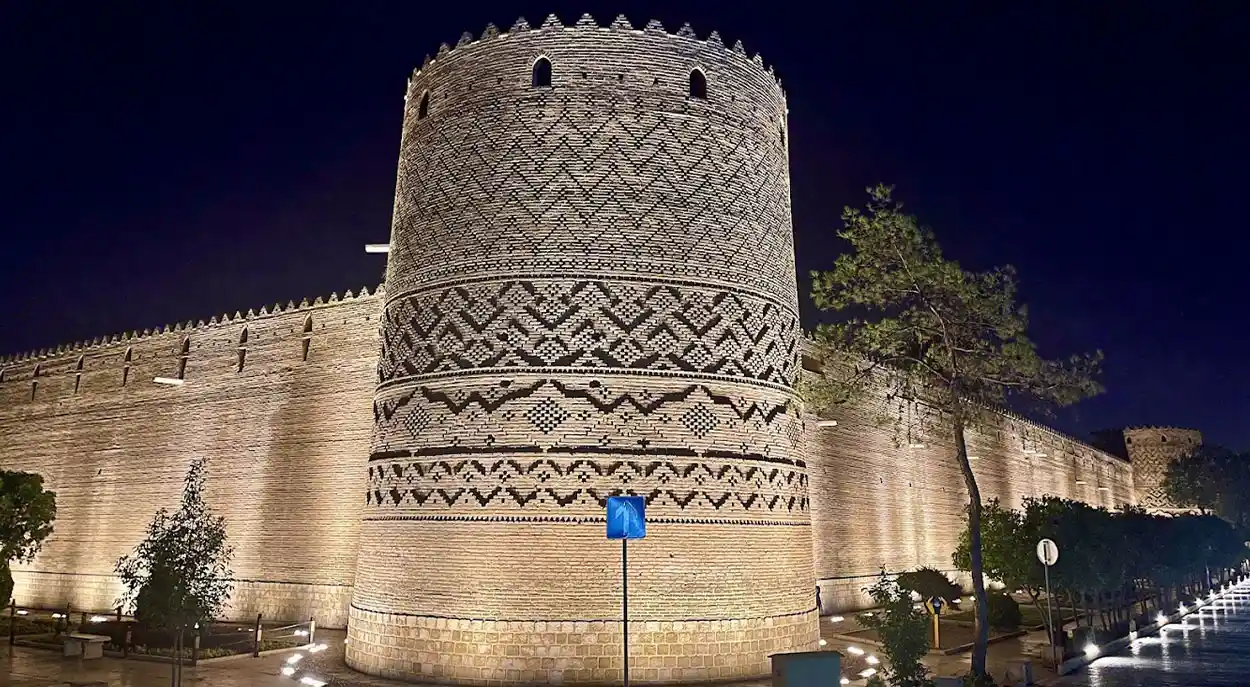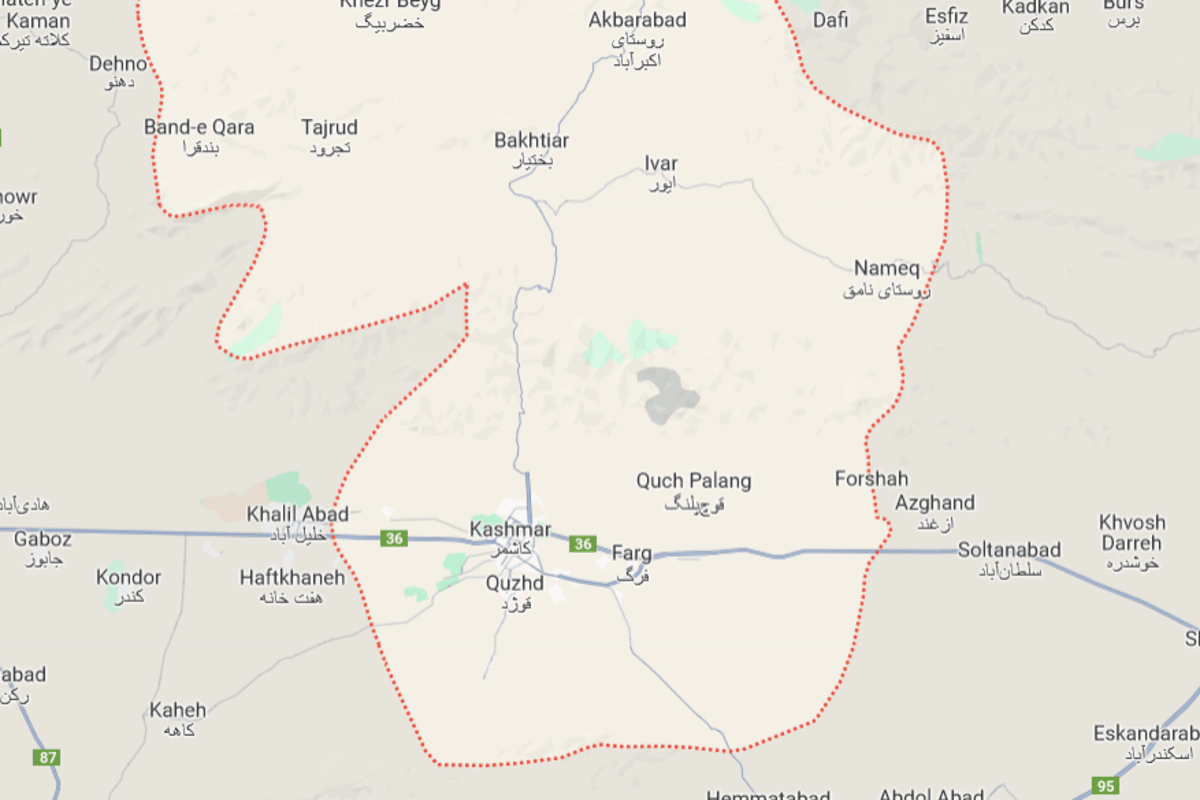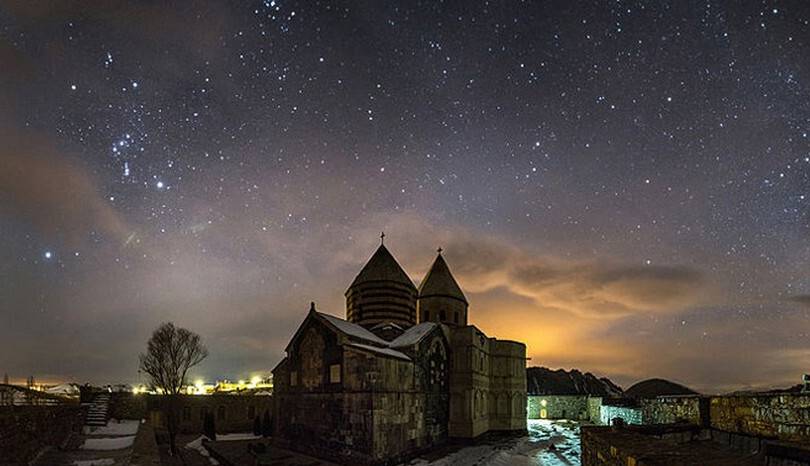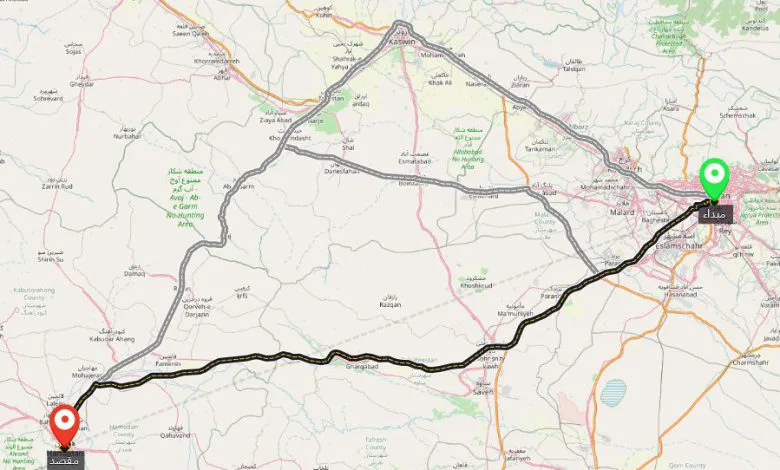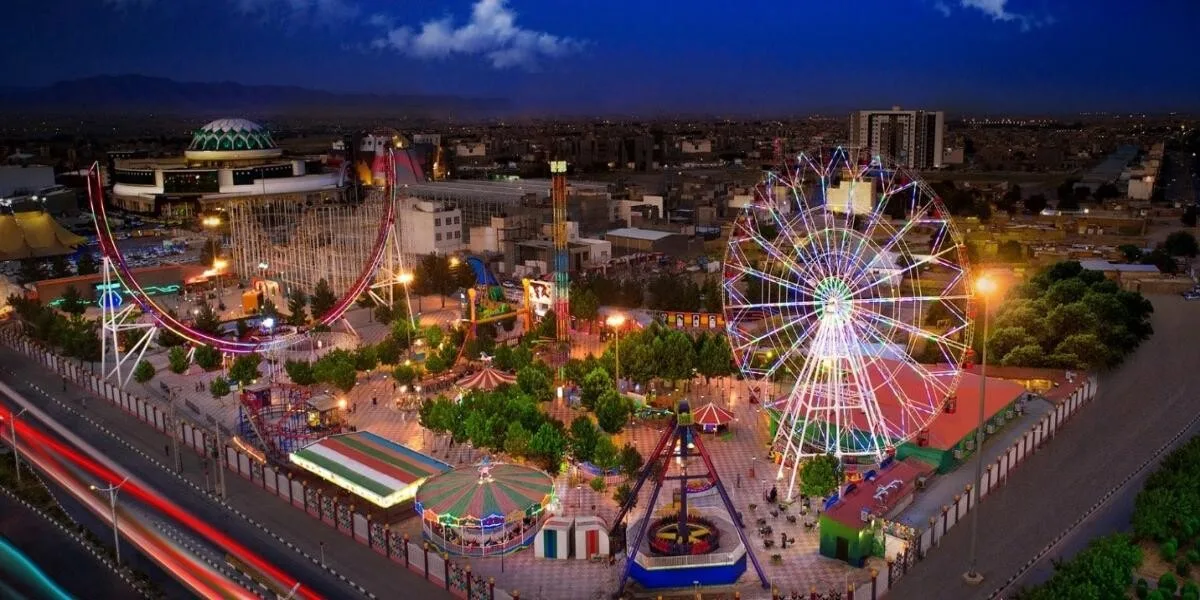Iran’s Most Famous Castles
With its millennia-old civilization, Iran is one of the most important grounds for the emergence of great empires. This vast territory, stretching from the Caspian Sea to the southernmost coast of Iran, has long been home to magnificent dynasties.
This time in Gulf City Pedia, we want to introduce you to the most famous castles of Iran. If you, like us, are passionate about history and the relics left by our ancestors, stay with us until the end of this article.
Arg-e Bam
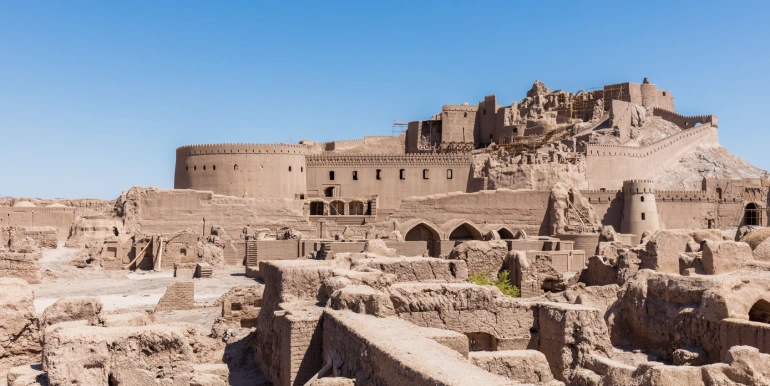
Arg-e Bam is the largest adobe building in the world, located in the city of Bam, Kerman Province. This historical complex was the central hub of Bam in its time and is now recognized as one of the masterpieces of adobe architecture in architectural history.
This fortress is one of the oldest castles in Iran and is registered as the fifth Iranian site on the UNESCO World Heritage list.
Archaeologists believe that Arg-e Bam dates back to the Achaemenid era (around 500 BC). At that time, this massive structure included various sections such as barracks, public buildings, and small and large houses.
Unfortunately, much of the fortress was destroyed in the Bam earthquake, bringing one of Iran’s most famous castles to the brink of ruin. However, with the efforts of local experts and the support of Italian and Japanese teams, the valuable site was largely restored and repaired by 2013.
Visiting Hours of Arg-e Bam: 9 AM to 7 PM
Closed Days: Official mourning periods
Falak-ol-Aflak Castle
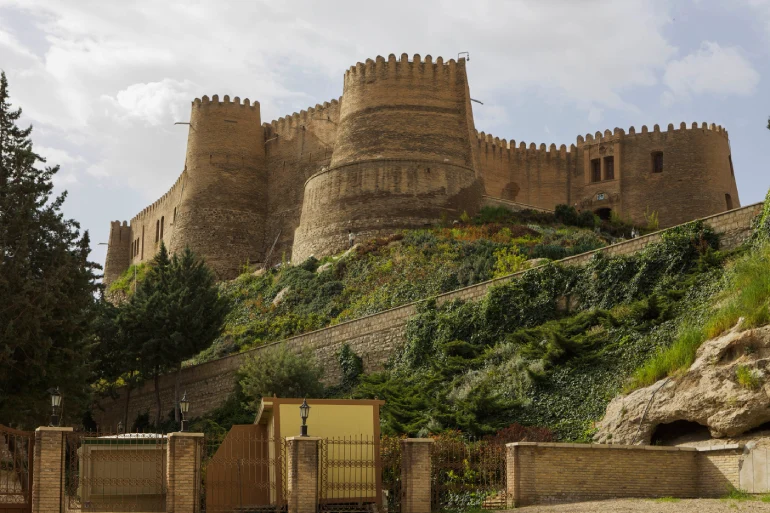
Falak-ol-Aflak Castle, also known as the Twelve-Tower Fortress, Atabakan Palace, or even the Shapurkhast Fortress, is one of the most famous castles in Iran, located in the heart of Khorramabad, Lorestan Province.
The castle dates back to the Sassanian period (around the 3rd to 7th centuries AD). It has been rebuilt at various times throughout history and has served as a government seat, prison, military barracks, stable, and bathhouse.
Overall, Falak-ol-Aflak Castle was a strategic and military important fortress during the Sassanian era and played a significant role in controlling the region.
The beautiful name Falak-ol-Aflak means “Shield of the Heavens,” referring to the castle’s location on a large hill overlooking the city. Today, this valuable structure is listed among Iran’s national heritage sites.
If you plan to visit Lorestan, we recommend you see this magnificent and unique engineering marvel. There are also ethnographic and archaeological museums within the castle grounds, where you can learn more about the rich history of the Lorestan people.
Visiting Hours of Falak-ol-Aflak Castle: 8 AM to 7 PM
Portuguese Castle

The Portuguese Castle was built during the Portuguese dominance over the Persian Gulf and is considered one of the important historical and tourist attractions of the southern islands of Iran.
Currently, there are three Portuguese castles on the islands of Qeshm, Hormuz, and Larak, remnants from the 16th century. These castles were constructed a few years after Shah Ismail Safavi came to power by Portuguese navigators, serving as their military and commercial bases in the Persian Gulf.
Interestingly, due to the use of local materials in construction, the Portuguese castles are mostly made of sand and stone, and the Portuguese Castle of Hormuz even has a red color (the color of the region’s soil).
Visiting Hours of Portuguese Castle: 8 AM to 5 PM
Shush Castle
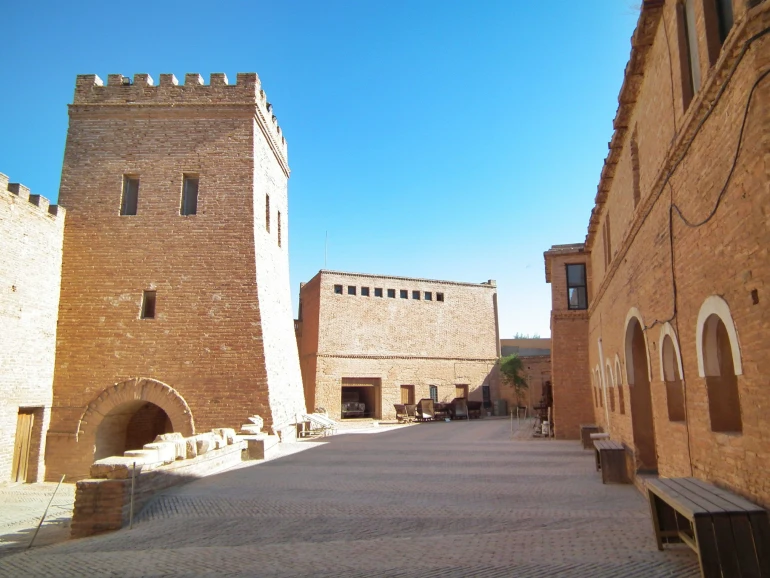
If you are thinking of visiting one of Iran’s most European-like castles, we recommend Shush Castle located in Khuzestan Province. Shush Castle is situated in the city of Shush, Khuzestan Province.
Built in 1897 by French archaeologist Jean Marie Jacques De Morgan as an archaeological base, the castle was inspired by medieval European architecture to house the artifacts excavated in the Shush area.
Interestingly, part of the construction materials of Shush Castle came from the remains of Darius the Great’s palace. Therefore, the combination of Persian cuneiform inscriptions with Roman and four-arch styles has created one of the most beautiful castles in Iran.
Visiting Hours of Shush Castle: Daily (except Saturdays) from 8 AM to 8 PM
Alamut Castle
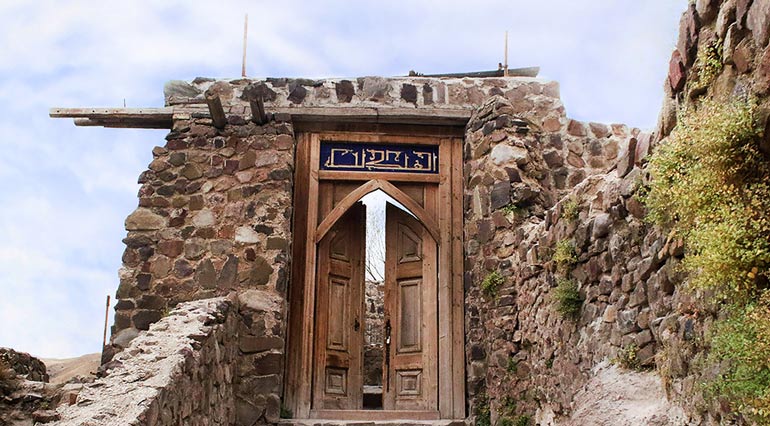
Alamut Castle is located in Qazvin Province, near the village of Gazorkhan. Built in 483 AH (around the 11th century AD) by Hassan Sabbah as the main base of the Ismailis, the castle was of significant strategic and military importance and had a long history of resistance against attacks.
Looking from above, Alamut Castle seems like a giant camel resting on a 2,000-meter high rock, surrounded on all sides by deep and dangerous precipices.
Alamut Castle is listed as a national monument of Iran and is also included in the UNESCO World Heritage list. Visiting this stunning site is free of charge. With less than a 40-minute hike, you can reach the top of the castle and enjoy the breathtaking views of the wild nature of Qazvin.
Kharim Khan Citadel
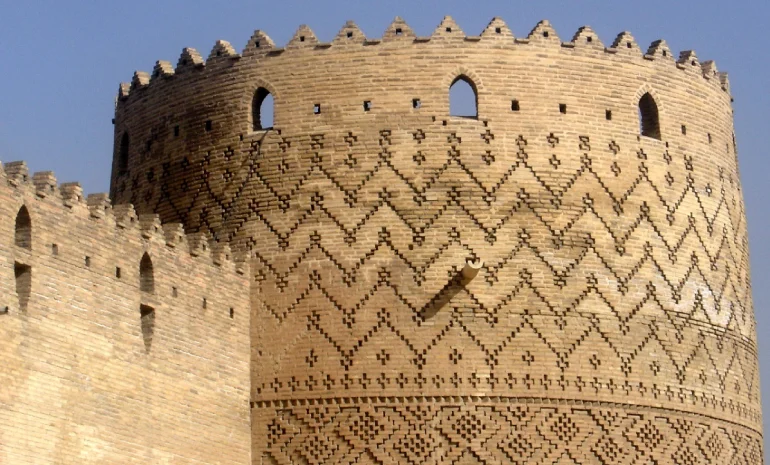
The Kharim Khan Citadel is located in the heart of Shiraz, Fars Province. This magnificent remnant from the Zand era has been shining like a gem in the old part of the city since the 18th century.
The Kharim Khan Citadel is the most beautiful example of a blend of residential and military architecture. It is said that this building was constructed in 1180 AH (1766 AD) by the order of Kharim Khan Zand as his residence and governmental base.
Today, the citadel serves as the Fars Province Museum and is one of the most important tourist attractions in Shiraz. Additionally, in 1972, the Kharim Khan Citadel was registered as one of Iran’s important national monuments.
You can visit the area around the citadel and stroll along Kharim Khan Street towards the Vakil Bazaar daily without any entrance fee, and enjoy the pleasant scent of bitter orange blossoms in the alleys of Shiraz.
Babak Castle
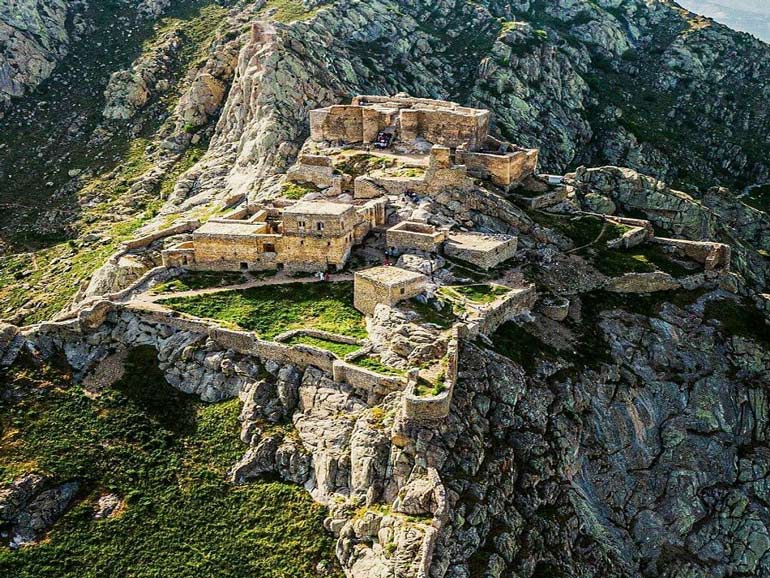
Babak Castle, also known as the Fortress of Babak, is located in East Azerbaijan Province, near the town of Kalibar. This castle served as the military base for Babak Khorramdin, the main leader of the Iranian resistance against the Abbasid Caliphate and the leader of the Khorramdinan movement.
The castle dates back to the Sassanian period (around the 3rd to 7th centuries AD). It is said that Babak Khorramdin used this fortress to resist the Abbasid Caliphate. The Fortress of Babak, or Badh, is one of Iran’s famous castles and is also registered as a national monument.
The fortress is situated in the lush Arasbaran forests on a high peak, so it is not surprising if, at first glance, we perceive this mysterious fortress as a dream on the edge of a cliff.
To visit Babak Castle, you need to be prepared for a challenging hike. Although entry is free, it requires about an hour and a half to two hours of walking through the forest from the parking area to the base of the castle. Additionally, the path to Babak Castle is rocky and not suitable for regular vehicles.
Atashgah Castle

If you are looking for pristine areas and wish to visit some of the oldest castles in Iran, Atashgah Castle is another suitable destination. Atashgah Castle, or the Fortress of Atashgah, is an ancient castle located 12 kilometers northwest of Kashmar, in Khorasan Razavi Province.
This castle dates back to the Sassanian Empire and is considered one of the most prominent and resilient ancient fortresses in Iran, known for its inaccessibility and resistance against invaders.
Visiting Atashgah Castle is free, but do not expect a tourist destination. Unfortunately, much of the castle has been destroyed, leaving only a vague reminder of its former glory.
However, if you plan to visit this historic castle, it’s worth noting that from the last point where you can drive, it is about one kilometer to the base of the castle. Reaching it involves a one-hour walk and hike through a beautiful valley.
Iraj Castle

Iraj Castle, also known as Gabre Castle, is one of the largest adobe castles in the world, located near Varamin, Tehran Province. Among all the famous castles in Iran that we have introduced so far, Iraj Castle is considered one of the oldest, dating back to the Parthian period.
Although today only a massive mound of earth remains of Iraj Castle, with a little more attention, traces of its former grandeur and magnificence can still be found.
In its time, Iraj Castle had a military function and was a robust and elevated fortress. This impressive structure was registered as one of Iran’s national monuments in 2003 and continues to hold a special place in archaeological studies.
Visiting Iraj Castle is free and not restricted to specific hours. Therefore, if you plan a half-day historical tour from Tehran, we recommend including Iraj Castle in your itinerary.
Izadkhast Fortress
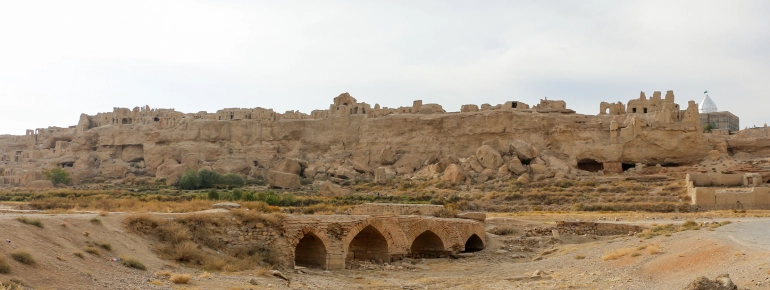
Izadkhast Fortress, also known as Qaleh Kohneh or Qaleh Sarsang, is one of the oldest castles in Iran, located in Fars Province near the town of Abadeh. This ancient fortress is situated on a high hill, making it nearly impossible for attackers to access.
The primary reason for the fortress’s fame is its architecture. Izadkhast was a complex of houses, bridges, caravanserais, and stables built in narrow alleys, lacking courtyards and roofs typical of the period. Instead, the roof of each floor served as the courtyard of the upper level.
For this reason, Izadkhast Fortress, which has been listed among Iran’s national monuments for many years, is considered one of the predecessors of modern apartment buildings.
The fortress is open every day of the year, and a local guide is available throughout the year.
Roudkhan Castle
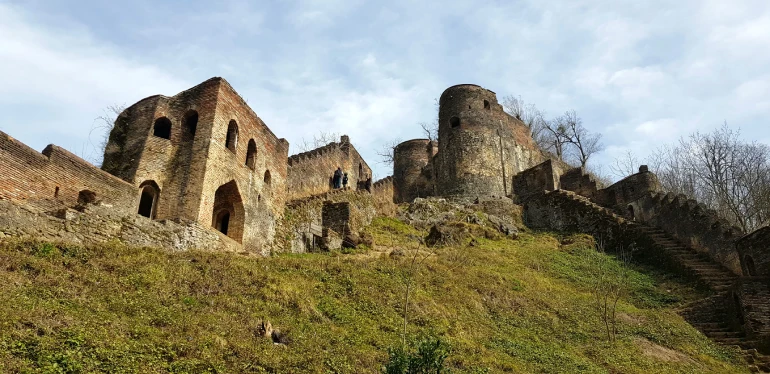
Now it’s time to visit one of the most beautiful castles in northern Iran, Roudkhan Castle. Also known as Hesami Castle, Roudkhan Castle is another famous Iranian fortress constructed entirely of wood and stone.
The grandeur and extent of this structure will undoubtedly amaze you, especially after you climb approximately two thousand steps to reach the castle. The long staircase of Roudkhan Castle winds through the forest and hosts hundreds, sometimes thousands, of visitors from across the country daily.
Roudkhan Castle dates back to the Sassanian era and coincides with the Arab invasion. At that time, the castle consisted of various sections such as barracks, residential buildings, a watchtower, a water reservoir, and an armory. Fortunately, despite the passage of time, the main structure has been preserved.
Visiting Hours of Roudkhan Castle: Daily from 8 AM to 5:30 PM
Rayen Castle
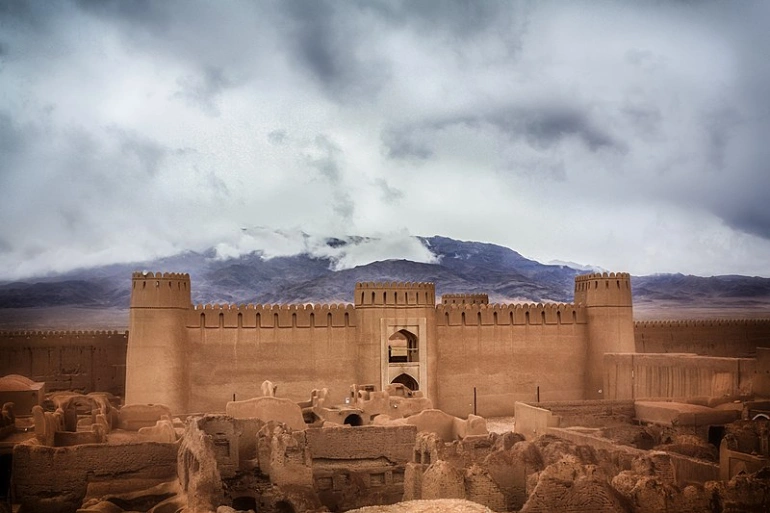
Rayen Castle, or Arg-e Rayen, is a mudbrick fortress similar to Arg-e Bam, located in the city of Rayen, Kerman Province. Although this adobe structure is much smaller than Arg-e Bam, it was like a large town within the main city, providing various services to its inhabitants.
Walking through the different sections of Rayen Castle, you can easily spot remnants of the royal and common areas, barracks, market, worship areas, storage facilities, docking area, livestock pens, and other main parts of the fortress.
Rayen Castle is currently registered as one of Iran’s national monuments. Thanks to continuous restorations by Iranian archaeologists, the castle is largely well-preserved and offers various facilities for visitors.
Additionally, there are several stalls inside the Rayen Castle dedicated to local handicraft producers. By visiting and purchasing from them, you can help support the region’s economic growth.
Visiting Hours of Rayen Castle: 8 AM to 5 PM during the second half of the year, and 4 PM during the first half of the year
Qaleh Dokhtar (Maiden Castle)
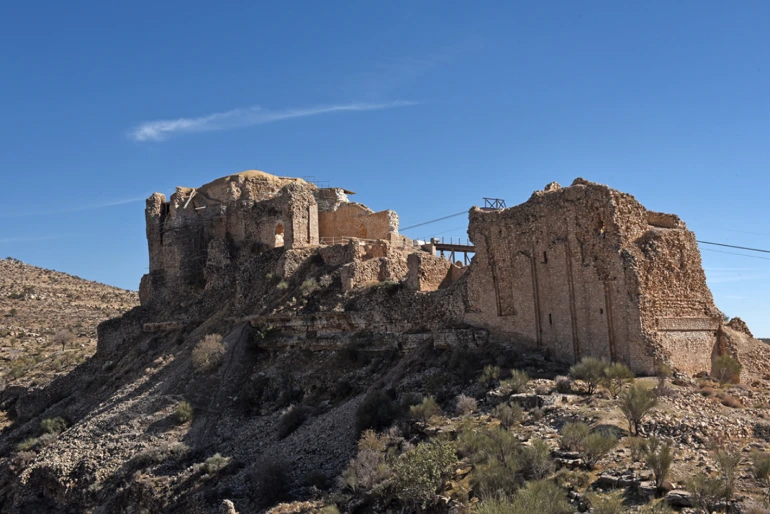
Qaleh Dokhtar, also known as Qaleh Kohneh, is one of the oldest castles in Iran, located in Kerman’s eastern region. It is believed to date back to the Median period. Given that the primary materials used in its construction were adobe and clay, a significant portion of the castle has unfortunately deteriorated over time.
The main structure of Qaleh Dokhtar consists of several towers along the castle walls, featuring a combination of square and circular profiles. The ruins of Qaleh Dokhtar evoke the ancient city’s long past and its name recalls the ancient goddess Anahita, the deity of water and fertility.
In ancient times, Qaleh Dokhtar served as a military fortress and a place of worship for the local people. You can visit this grand castle at any time of the day and stroll through the history of ancient Iran without any admission fee.
Narin Castle
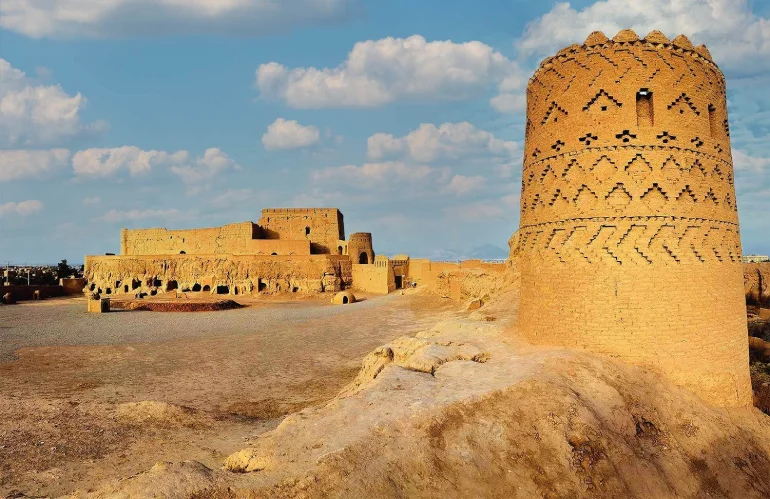
Another of Iran’s oldest castles is Narin Castle in Meybod, which dates back to the Median period, approximately 4000 years before the Common Era. Also known as Qaleh Kohneh and Naranj Castle, Narin Castle is the oldest governmental fortress in the world and the largest surviving adobe and clay structure from ancient times globally.
This valuable site is currently registered as one of Iran’s national monuments and attracts history enthusiasts from around the world every day.
Narin Castle’s structure includes various towers and thick stone walls, over 5 meters thick, designed to defend against enemy attacks. The castle has undergone repairs and renovations over different historical periods, leaving traces from each era on its adobe foundation.
Visiting Hours of Narin Castle: Daily from 7:30 AM to 5 PM
Furg Castle
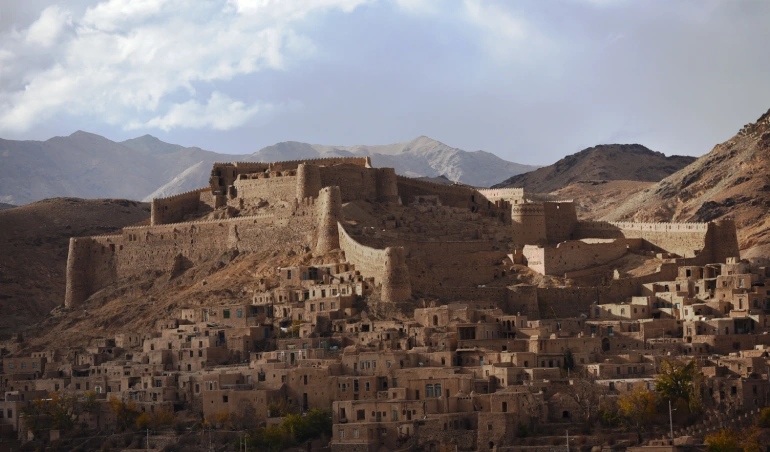
Furg Castle, also known as Mirza Rafi Khan Castle, is one of the famous castles in Iran, located north of the village of Furg, 110 kilometers west of Birjand in South Khorasan Province.
Archaeologists believe that Furg Castle was one of the largest Ismaili bases after the Alamut Castle. For this reason, Furg is one of the ten major and valuable castles in Iran listed as a national monument.
Built during the reign of Nader Shah Afshar and later destroyed by cannon fire from Mohammad Ibrahim Alam during the Pahlavi era, the remaining grandeur of Furg Castle still reflects its former magnificence.
Visiting Fee of Furg Castle: Free
Visiting Hours of Furg Castle: Daily from 8:15 AM to 5 PM
Qaleh Salseel (Salsal Castle)

Among Iran’s largest castles, Qaleh Salseel in Shushtar, Khuzestan Province, is undoubtedly one of the most significant examples. Many sources and historians believe that Qaleh Salseel dates back to the Achaemenid period.
The castle is named after “Abi Salseel,” who was responsible for its restoration in the 4th century AH (10th century AD). Notably, the area of Qaleh Salseel is approximately 5.5 hectares, which is about the size of ten football fields!
This beautiful castle features various sections, including a pavilion, towers, walls, bridges, and a moat. Although many parts of Qaleh Salseel have deteriorated over time, visiting this majestic fortress, through which the Karun River flows, is still worthwhile.
Visiting Fee of Qaleh Salseel: Free
Visiting Hours of Qaleh Salseel: Daily from 9 AM to 5 PM
Nushijan Castle
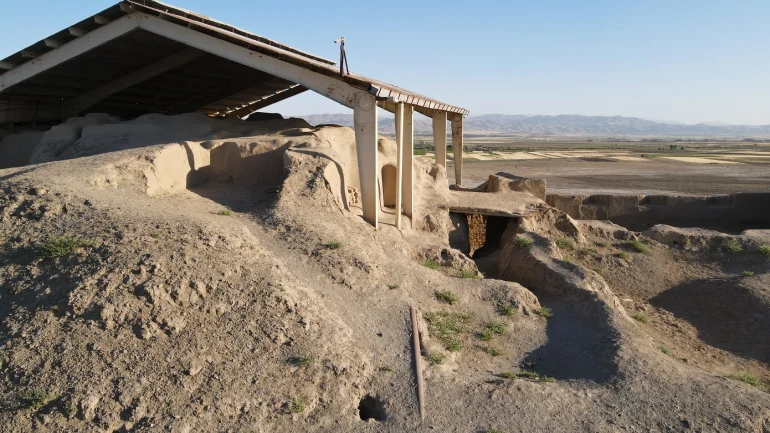
The Nushijan Mound, where the Nushijan Castle is located, is one of Iran’s most valuable archaeological sites and is listed among the country’s national monuments. Situated in Hamadan Province near the city of Malayer, this mound features significant historical remains from the Median period.
One of the most important parts of the Nushijan Mound is the Nushijan Castle. This expansive fortress includes various sections such as the fire temple, the columned hall (Apadana), and the central temple.
It appears that some aspects of Achaemenid architecture were directly inspired by the design of Nushijan. Therefore, if you are interested in exploring history and seeing the influence of our ancestors on each other’s art, visiting Nushijan Castle in Malayer is highly recommended.
Visiting Hours of Nushijan Castle: 8 AM to 8:20 PM
Qaleh Dokhtar in Firoozabad
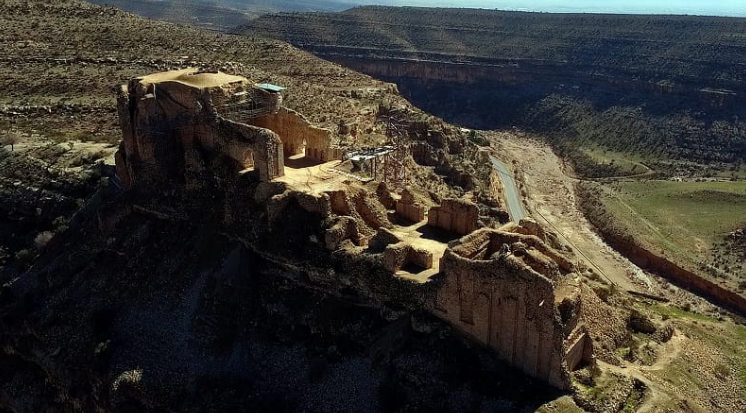
Qaleh Dokhtar is located in Fars Province, near the city of Firoozabad. This ancient fortress was constructed during the Sassanian era by Ardashir I.
Qaleh Dokhtar is recognized as one of the strategic military and defensive bases of the Sassanian Empire and is also listed among Iran’s national monuments. This robust and impregnable fortress is built atop a high mountain and is connected to a cave within the mountain via a narrow passage.
It is said that during enemy attacks, the inhabitants of the fortress could use this underground tunnel to communicate with the city and supply food and manpower to the fortress.
Visiting Qaleh Dokhtar is free of charge, and the path to the castle involves a stairway. To visit this two-thousand-year-old monument, you need to walk less than 20 minutes from the parking area to the entrance of the fortress.
Qaleh Vaali
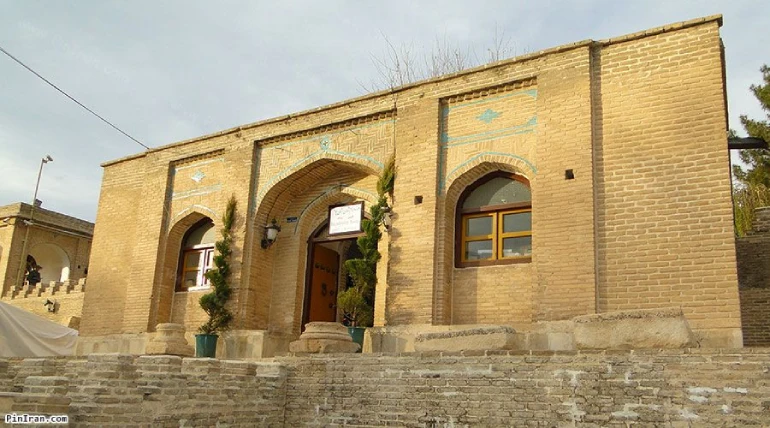
Qaleh Vaali is located in the city of Ilam in Ilam Province. This beautiful fortress was constructed during the Qajar era on the orders of Gholamreza Vaali Feli to serve as his summer residence.
The architecture of Qaleh Vaali is in the Qajar style. This trapezoidal structure features interlocking rooms, latticed windows with colored glass, decorated capitals in the verandah, archways, and colorful tile work above. The tall, ancient pine trees and a pond in the front courtyard evoke the appearance of traditional Iranian houses.
With all these features, Qaleh Vaali can truly be considered one of the most beautiful Qajar-era castles that have survived to the present day.
Fortunately, Qaleh Vaali is in relatively good condition. After sustaining damage during the Iran-Iraq War, this valuable national monument has been restored multiple times and now welcomes discerning tourists from around the world.
Visiting Hours of Qaleh Vaali: 8 AM to 12 PM and 2 PM to 9 PM
Qaleh Saryazd
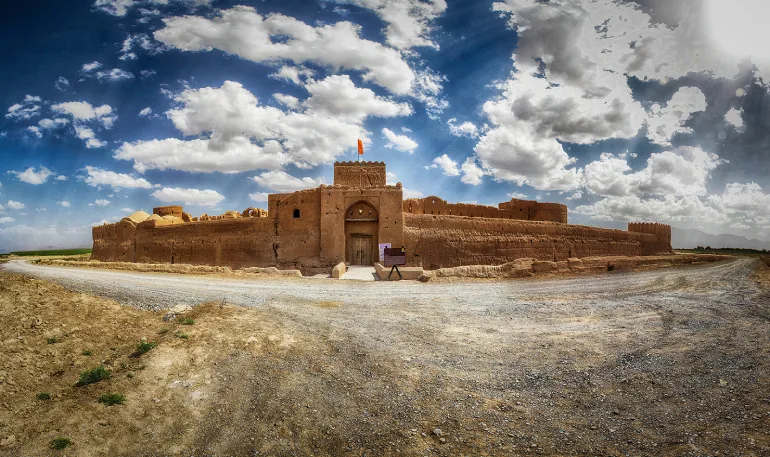
Looking for the best view of the historic city of Yazd? We recommend the rooftop of Qaleh Saryazd. If you lived in ancient times, you probably had limited ways to protect your valuable possessions, especially during enemy invasions. However, the ruler of Yazd during the Sassanian period solved this problem with some ingenuity.
Qaleh Saryazd, located in Yazd Province and Mehriz County, is the largest and oldest vault in Iran and the world, serving as a secure storage facility for grains, food, money, gold, jewelry, and weapons.
This massive structure consists of 468 rooms, each equipped with its own door and key for storing valuable items. Qaleh Saryazd was registered as one of Iran’s national monuments in June 1975 and is open for daily visits.
Visiting Hours of Qaleh Saryazd: Daily from 8 AM to 6 PM
Qaleh Gardkouh
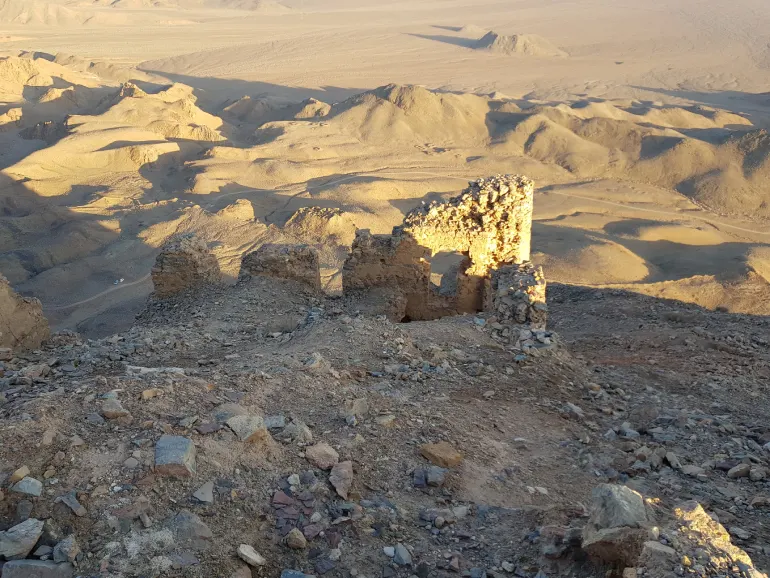
Qaleh Gardkouh is another of Iran’s ancient castles, located in the village of Hajiabad Rezveh in Damghan County.
Also known as the Gombedan Castle, it is one of the important Ismaili fortresses of the Alamut period and is listed among Iran’s national monuments.
Archaeologists believe that the name Gardkouh is derived from the mountain on which the castle is built; this massive mountain stands about a thousand meters high and has a rounded, dome-like shape.
In the past, Qaleh Gardkouh served as a refuge and was eventually captured by the Mongols after the fall of the Ismailis in Iran. Visiting this site is free of charge, and to view it, you need to ascend the eastern side of the mountain.
Qaleh Birjand

Qaleh Birjand is located in the city of Birjand, the center of South Khorasan Province, and sits atop one of the city’s highest hills. This adobe and clay castle is also known by various names such as Birjand Fortress, Qaleh Tah Deh, and Lower City.
According to archaeologists, Qaleh Birjand originally had seven cylindrical towers used for surveillance, archery, and defense. The castle was built during the Safavid era and was fully reconstructed during the Qajar period.
Traveling to South Khorasan offers the opportunity to visit one of Iran’s most beautiful castles.
Visiting Hours of Qaleh Birjand: Daily from 9:30 AM to 11 PM
Sangan Castle
Sangan Castle, located in the village of Sangan in West Azerbaijan Province, is also known as Musi Khan Castle. With a history spanning 150 years, it is listed among the national monuments of Iran.
Interestingly, among all the castles mentioned in this article from Ali Baba Magazine, Sangan Castle is the only one still inhabited. Since the time of Shah Abbas I, the Zarza tribe has lived in this castle, which has served as the residence of the tribe’s chief and the administrative center for their properties.
Currently, the Zarza women live in the western part of the castle, while the men reside in the eastern section.
Sangan Castle is a two-story structure with four watchtowers and 20 living rooms, as well as five reception areas. While it is permissible to visit the castle’s exterior, access to the interior is restricted due to the ongoing occupation by the Zarza tribe.
Markuh Castle
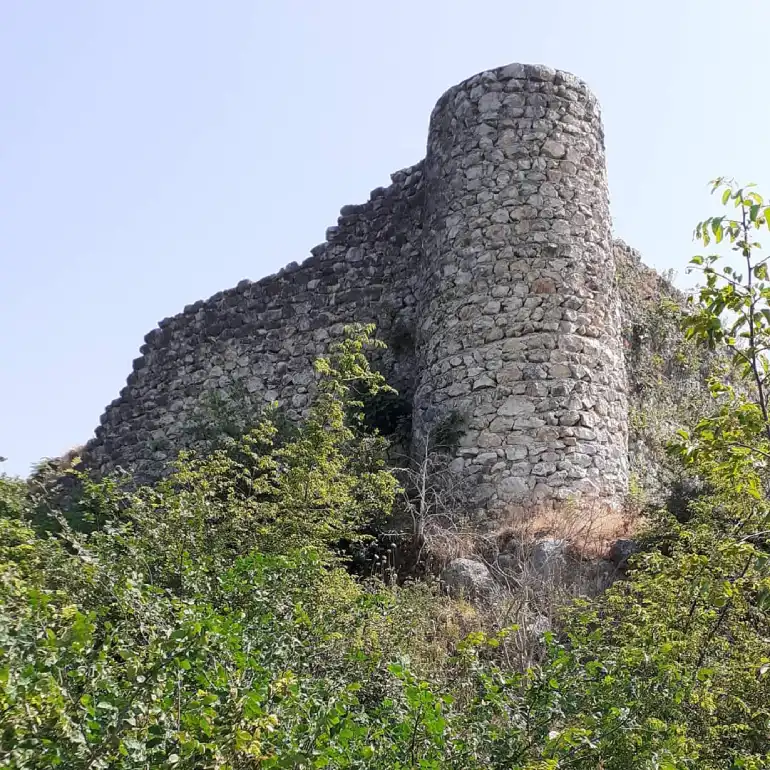
Another notable castle in northern Iran is Markuh Castle, located in Ramsar, Mazandaran Province. Markuh Castle is a military fortress with a history of over 1000 years. This historic site is registered as a national monument and is considered one of the key tourist-historical destinations in northern Iran.
The construction materials of Markuh Castle primarily include stone, mortar, and plaster. This expansive fortress can accommodate at least one hundred soldiers. Its design features four outer walls and supporting towers, allowing guards a 360-degree view of the surroundings.
To visit Markuh Castle, you need to reach the city of Katalam on the Telar Sar road. After parking your vehicle at the base of the mountain, you will need to climb approximately 300 short steps. Following a 10 to 15-minute walk along a narrow, lush, and scenic path, you will arrive at this impressive castle.
Entrance Fee for Markuh Castle: Free
Visiting Hours: Open daily, 24 hours
Tips for an Unforgettable Visit to Iran’s Most Famous Castles
In this article, Gulf City Pedia has aimed to introduce Iran’s finest castles, considering both their aesthetic and historical significance as well as their amenities.
Remember that castles are typically built in mountainous areas or on high hills. Therefore, visiting these historical sites can be challenging and uncomfortable during intense heat or cold weather.
Lastly, remember that you are the custodian of the generations before and after you. Therefore, avoid running, writing graffiti, littering, and damaging these ancient monuments in any way.

